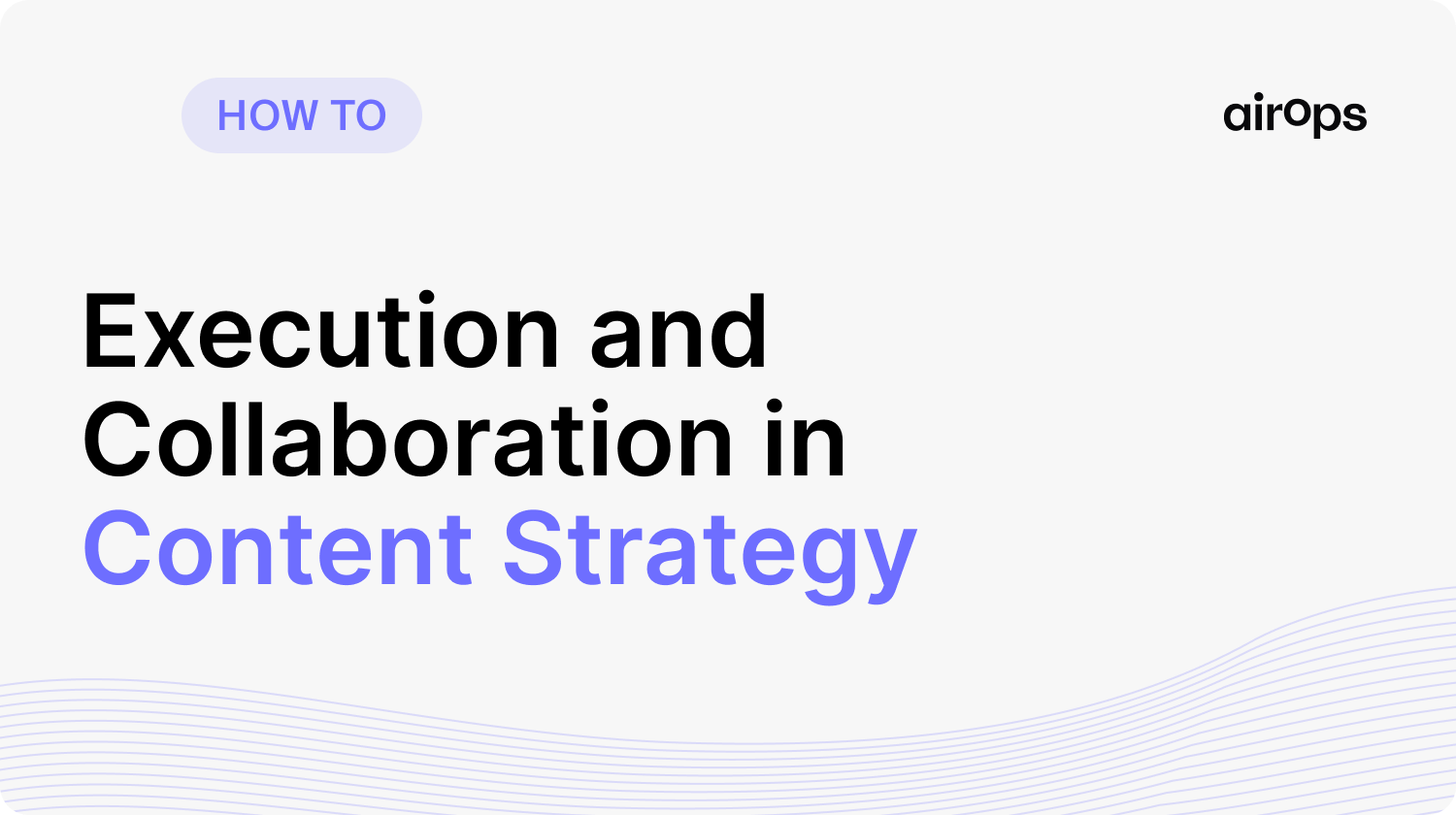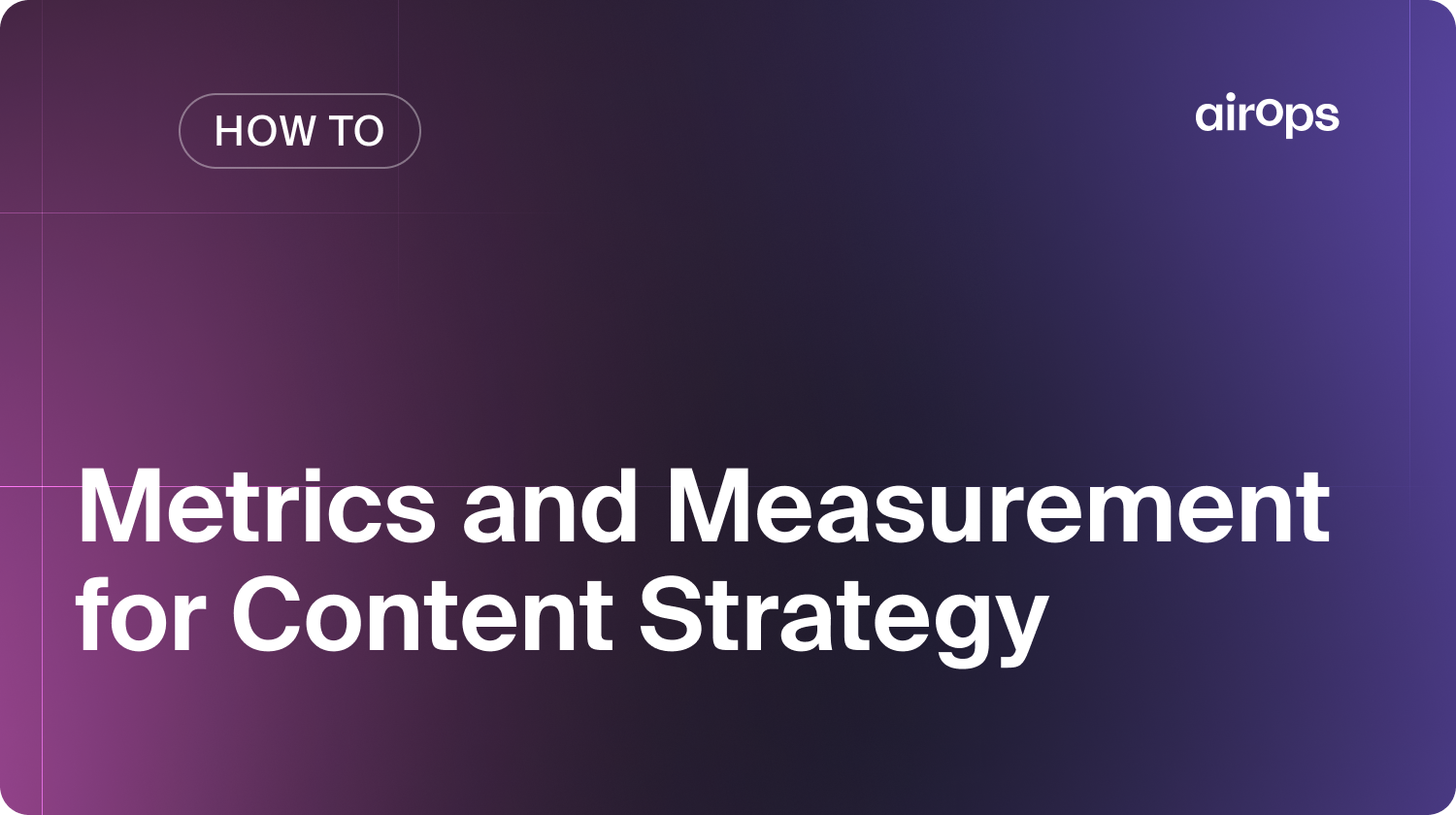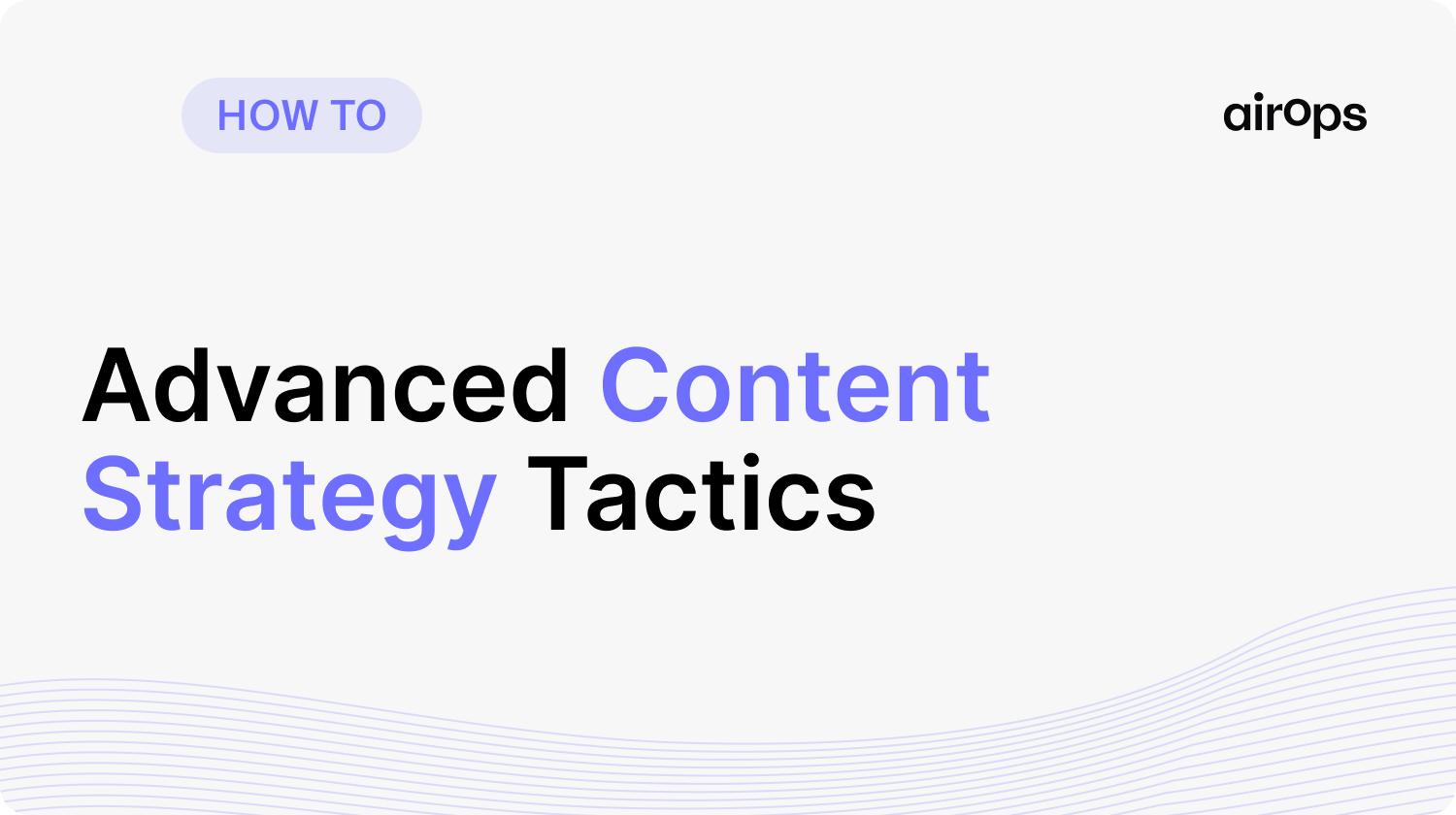How to Fix What’s Broken in Your Content Strategy & Execution

- Build workflows, write clear briefs, and create feedback loops that connect your team's work to actual performance metrics.
- Sync your content calendar with product launches using phased campaigns—build awareness early, then maintain momentum post-launch.
- Use templates and implement automated quality checks
A content strategy without execution is just a wishlist.
To keep up, teams need systems that turn plans into action. That means working together closely, keeping workflows simple, and learning from every project.
This guide shows you how to do it, like how to plan around launches, write clear briefs, use AI to spark ideas, and keep content moving smoothly from concept to publish.
How Can My Content Roadmap Support Product Marketing Goals?
A content roadmap that supports product marketing goals requires intentional alignment from planning through execution. Map each content piece to specific product milestones, customer journey stages, and revenue objectives. Build your calendar around product launches, feature releases, and sales enablement needs.
Effective alignment includes:
• Create shared dashboards tracking both content metrics and product KPIs like demo requests and trial conversions.
• Schedule monthly sync meetings between content and product teams to review upcoming releases and messaging priorities.
• Develop content series that educate prospects about problems your product solves before launch dates arrive.
This alignment ensures your content drives product awareness and adoption rather than existing in isolation. Regular communication between teams prevents misaligned messaging and maximizes content impact on pipeline generation. According to research, 66% of successful content marketers have a documented strategy, versus only 11% of unsuccessful ones—making strategic documentation essential for scaling content collaboration.
How Can I Get Buy-In for a Content Strategy Refresh?
Getting buy-in for a content strategy refresh starts with demonstrating clear business impact. Present data showing current performance gaps, competitor advantages, and missed revenue opportunities. Focus on specific metrics leadership cares about like pipeline contribution and customer acquisition costs.
Build your business case with:
• Benchmark your current content performance against industry standards and direct competitors' visibility metrics.
• Calculate potential ROI using conservative estimates for traffic increases, conversion improvements, and cost savings.
• Present a phased approach with quick wins in the first 90 days and long-term transformation goals.
Frame the refresh as essential for maintaining competitive advantage in AI-driven search environments. Show how updated strategies will future-proof your content operations and drive measurable business outcomes.
How Do I Create a Feedback Loop Between Strategy and Execution?
Creating effective feedback loops between strategy and execution requires systematic performance tracking and regular review cycles. Establish clear metrics that connect content performance to strategic goals and business outcomes. Build workflows that automatically surface insights and trigger optimization actions.
Strong feedback systems include:
• Weekly performance dashboards showing content metrics alongside conversion data and revenue attribution.
• Monthly retrospectives where teams analyze what worked, what didn't, and why specific pieces succeeded.
• Quarterly strategy reviews that incorporate execution learnings into updated plans and resource allocation decisions.
These feedback mechanisms ensure your strategy evolves based on real performance data. Teams can quickly identify winning formats and topics while eliminating ineffective approaches. Understanding performance metrics for content teams helps establish the right KPIs for your feedback loops.
What's the Best Way to Run a Content Brainstorm with AI Tools?
Running content brainstorms with AI tools works best when you combine human creativity with machine capabilities. Start sessions with clear objectives, target personas, and business goals before engaging AI. Use AI for rapid ideation, gap analysis, and competitive research while humans provide strategic direction.
Effective AI brainstorm workflows:
• Prime AI with your brand voice, audience data, and successful past content for contextual suggestions.
• Generate topic clusters and content angles at scale, then have humans evaluate for brand fit.
• Use AI to identify content gaps by analyzing competitor coverage and search intent patterns.
"According to McKinsey, generative AI could increase marketing productivity by 5–15% of total marketing spend."
Use that efficiency gain to explore more ideas up front, then apply human judgment to prioritize a focused set that aligns with strategy and brand. This hybrid approach produces more innovative ideas faster than traditional brainstorming alone. Teams can explore hundreds of angles quickly while maintaining strategic focus and brand authenticity. According to AirOps research, 72% of teams plan to increase investment in AI tools and capabilities over the next year, recognizing the value of AI-enhanced content operations.
What's the Most Effective Format for a Content Brief?
The most effective content brief format balances comprehensive guidance with practical usability for writers. Include clear objectives, target keywords, user intent, and success metrics upfront. Structure briefs to be scannable with sections for research, key points, and brand requirements. Emily Kramer suggests using a GACCS brief. That's goals, audience, channels, creative, and stakeholders.
Essential brief components:
• Define the target reader, their pain points, and what action they should take after reading.
• Include competitor analysis showing what's ranking and how your content will be differentiated.
• Provide an outline with H2s, key points per section, and required internal/external links.
Modern briefs should be living documents that incorporate AI insights and performance data. This format ensures consistent quality while speeding up content production across distributed teams.
.png)
How Should I Structure My Content Plan Around Product Launches?
Structure your content plan around product launches by working backward from release dates with phased campaigns. Create awareness content 8-12 weeks before launch to educate about problems you solve. Build consideration content 4-6 weeks out showcasing capabilities and differentiators.
Launch-aligned content phases:
• Pre-launch phase focuses on problem awareness and industry education without mentioning the product directly.
• Launch phase delivers product-focused content including demos, comparisons, and implementation guides for buyers.
• Post-launch phase provides customer stories, advanced use cases, and optimization tips for users.
According to Gartner, B2B buyers spend only 17% of their purchase time meeting with potential suppliers. That reality makes pre-launch education content critical, since much of the journey unfolds through independent research. This phased approach builds momentum and ensures audiences are primed when products become available. Content teams can support the entire customer journey from awareness through retention and expansion.
Best Practices for Scaling Content Execution Across Teams
Successful content execution at scale requires clear processes, defined roles, and automated workflows.
• Standardize workflows: Create repeatable templates for briefs, reviews, and publishing that all teams follow consistently.
• Automate quality checks: Use AI tools to verify brand voice, SEO optimization, and factual accuracy before publishing.
• Define ownership clearly: Assign specific team members to strategy, creation, optimization, and performance tracking roles.
• Build knowledge bases: Document successful frameworks, style guides, and performance benchmarks for team reference.
• Measure systematically: Track content velocity, quality scores, and business impact metrics across all teams.
The shift from traditional content roles to content workflow automation enables teams to scale without sacrificing quality. Companies like Contact Studios demonstrate this approach in action—they improved content quality and consistency while scaling high-quality programmatic content, resulting in significantly better client outcomes.
Takeaways
These strategies transform content execution from chaotic scrambles into systematic, scalable operations.
- Create content roadmaps with product launches through phased campaigns that build awareness before release dates. This coordination maximizes impact on pipeline and adoption metrics.
- Create structured feedback loops using weekly dashboards, monthly retrospectives, and quarterly strategy reviews. Real performance data should drive strategic adjustments and resource decisions.
- Use AI tools to enhance brainstorming by generating ideas at scale while humans provide strategic direction. This hybrid approach produces more innovative content faster than traditional methods.
- Develop comprehensive content briefs that include objectives, audience insights, and competitive analysis upfront. Clear briefs ensure quality and consistency across distributed content teams.
- Build systematic workflows with defined roles, automated quality checks, and standardized templates for scaling. These operational foundations enable teams to increase output without sacrificing quality.
Content excellence comes from connecting strategy to execution through clear systems and continuous improvement. Teams that master these operational elements will outperform competitors in both traditional and AI-powered search.
Grow Content Ops with Workflows
Most teams struggle with scattered processes and inconsistent quality when scaling content. AirOps unifies your entire content operation in one system, from strategy to execution.
• Create workflows to run precise AI processes with human review.
• Track performance metrics alongside business outcomes for data-driven optimization decisions.
• Automate content refresh and creation while maintaining brand voice and quality standards.
Teams using AirOps see immediate improvements in content velocity and performance.
Ready to transform your content execution? Book a call to learn how AirOps helps brands scale content operations with precision and speed.
Win AI Search.
Increase brand visibility across AI search and Google with the only platform taking you from insights to action.
Get the latest on AI content & marketing
Get the latest in growth and AI workflows delivered to your inbox each week

.avif)






